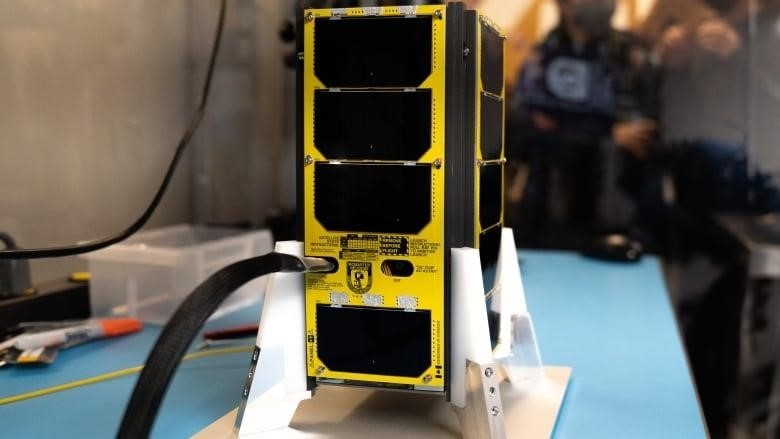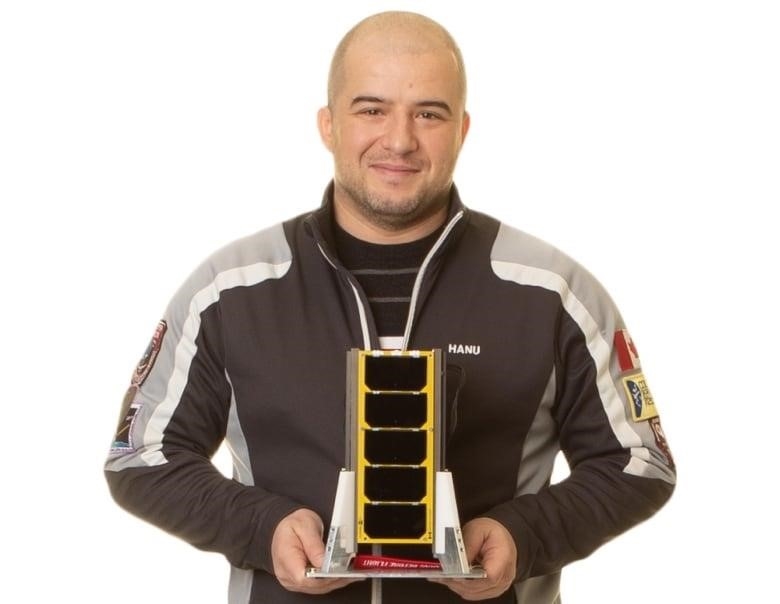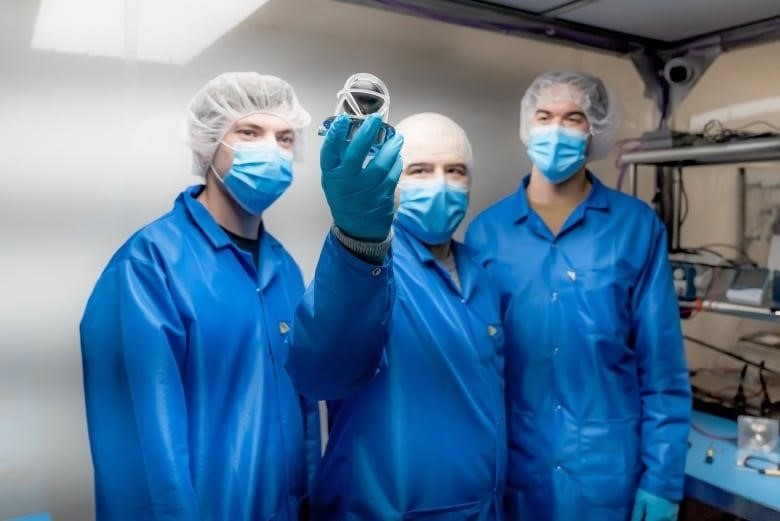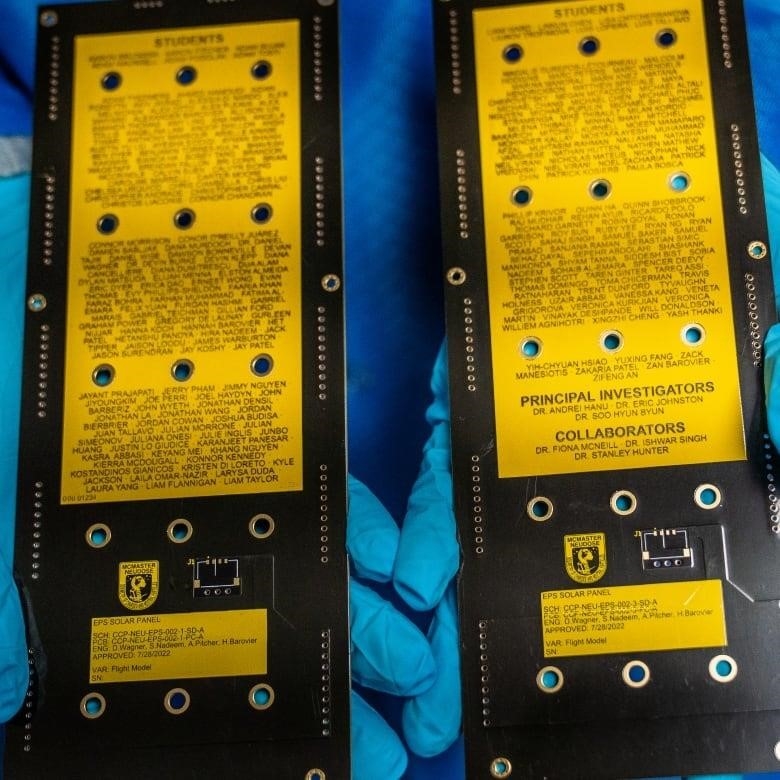
NEUDOSE will help figure out how much radiation astronauts are exposed to
Next week, McMaster University’s first satellite that will go into space will be part of a SpaceX shuttle launch in Florida.
Over the course of eight years, more than 150 Hamilton University students, staff, and alumni worked on the NEUDOSE project. The satellite will be sent into a lower orbit around the Earth on Tuesday at 8:30 p.m. ET.
The goal is to learn more about radiation in space and how it affects the human body.
Andrei Hanu, a professor of physics and astronomy and co-principal investigator of the project, said, “I think everyone has butterflies and is very excited after all this time.”
“The last few months have been stressful, but now everyone is ready to take everything in.”
Neutron Dosimetry and Exploration, or NEUDOSE for short, is a small satellite that is only 20 centimeters tall. It is made to gather information outside of the Earth’s atmosphere that will detect and measure the amount of radiation in space.
Scientists want to know what risks astronauts face when they stay in space for a long time.

At the Kennedy Space Center in Cape Canaveral, the satellite is waiting to be put on the SpaceX shuttle. On the McMaster campus, in the Information Technology Building, a command center has been set up to receive data from NEUDOSE.
Hanu told CBC Hamilton that he hoped to join more than 20 other project members in Florida on Tuesday for the launch of the project.
Hanu said in a news release, “I hope not to cry too much.”
From concept to spac
Hanu said that his experiences at NASA’s Goddard Space Flight Center in 2014 gave him the idea for such an ambitious project. As a research scientist, he went to a conference about NASA’s new Space Launch System, which the agency says will be the most powerful rocket it has ever made.
“I was stunned. I couldn’t believe that students and researchers in the U.S. had these chances that we didn’t have in Canada,” “he said. “I told them, ‘I want to do this with a Canadian university.'”

Hanu said that when he went back to McMaster, he spent a month coming up with a rough plan. On January 31, 2015, he presented a proposal called “Do you want to build a satellite?”
It’s one of 15 projects that were chosen to be funded through the Canadian CubeSat Project in 2017. The Canadian Space Agency and Ontario power company Bruce Power started giving them money to help with the project.
“On the backs of napkins.
Daniel Tajik has a Ph.D. in electromagnetics and radio-frequency engineering from McMaster, where he mostly worked on the campus ground station system.
In an interview, he said that he was proud that a project that was “written on the backs of napkins” was now going into space.
He said, “It started as a PhD project and a dream to build something really big.”
He said that many of the students who worked on the project went on to work for space companies, and he’s glad he was a part of something important.
“We all had our little parts to play in putting it together, but I’m happy that something I worked on and held in my hands is going to float in space for maybe a year.”
The names of everyone who worked on the project were laser-etched into the satellite’s plates.

Aaron Pitcher, a PhD student in electrical and computer engineering at McMaster in his fourth year, joined the project in 2016. He is now in charge of all the systems.
He said it was a good learning opportunity and hoped that more students would go through the program and join future projects.
“It has been a real pleasure to work on this project.” At this point in my career, I really don’t know what to say when I talk about putting something in space.
